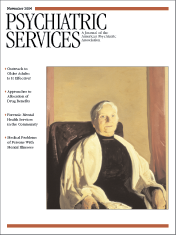Autism Spectrum Disorders: A Research Review for Practitioners
The growth in knowledge about the causes and treatments of autism and related conditions has been phenomenal in recent years. This book provides a succinct and helpful summary of current knowledge, highlighting areas in which knowledge is readily available and areas in which it continues to be lacking. The editors are respected members of the autism research community, and all the authors are drawn from the M.I.N.D. Institute of the University of California at Davis.
In the first chapter, two of the book's editors—Sally Ozonoff, Ph.D., and Sally L. Rogers, Ph.D.—review some of the critical advances during the years since Kanner's first description of autism in 1943. The next section includes four chapters on different aspects of interdisciplinary approaches to assessment—contributions from psychiatry, psychology, neurology, and pediatrics. These are solid chapters containing a wealth of information. Probably because of space limitations, one major area—speech and communication—is not included.
The third part of the book includes five chapters focused on treatment. The chapter on nonmedical interventions is a model of clarity. Similarly, the chapter on pharmacotherapy provides a useful summary of current knowledge. The chapter on alternative treatments will be invaluable for professionals and parents alike; too often, this area is not addressed or is addressed in insufficient detail. The evenhanded approach is most welcome. The chapter by Brown and Rogers on cultural issues is one of a handful focused on this topic. The final chapter, by Charles and Gardner, provides some historical context for the model of research and clinical work provided at the M.I.N.D. Institute and will be of greatest interest to centers and individuals who are thinking about the formidable problem of organizing systems of care for persons with an autism spectrum disorder.
The final section of the volume provides a detailed list of resources, including information about resources for parents, intervention, related disorders, and centers around the country that specialize in autism and related conditions. This list itself is worth the price of the book.
In summary, Autism Spectrum Disorders: A Research Review for Practitioners is an outstanding contribution that will be of interest to teachers, parents, and professionals. As with any edited volume, the chapters are somewhat variable, but it is a tribute to the editors that my main criticism is that the book is too short! On the other hand, it is just this concern that will make the book, in providing such a concise account, so attractive to parents and teachers.
Dr. Volkmar is Irving B. Harris professor of child psychiatry, pediatrics, and psychology at the Child Study Center of Yale University School of Medicine in New Haven, Connecticut.



